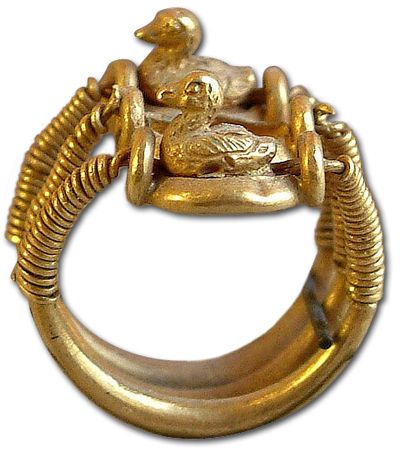The grandeur of the ancient Egyptian civilization is evident in the crafts and artifactsleft behind, including jewelry. Egyptians had access to precious metals and gem stones. The discovery of gold, in abundance, in the Nubian deserts revolutionized the Egyptian jewelry making.
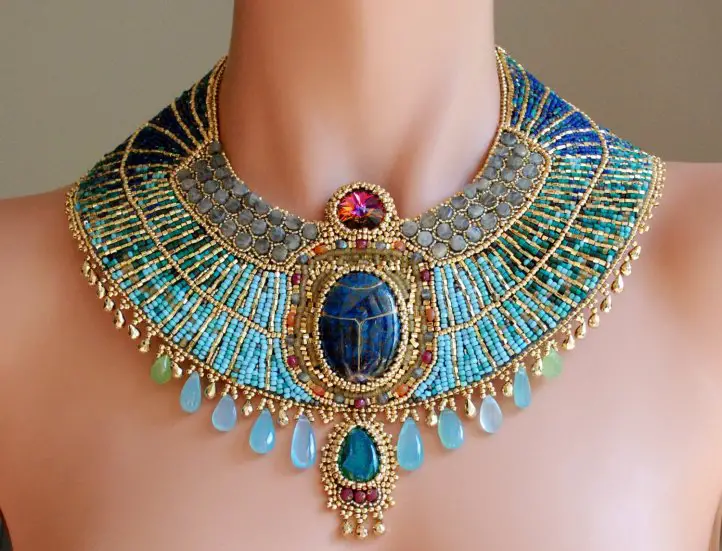
With their advanced tools, technology and skilled craftsmen, they were among the first who established the jewelry making industry in the ancient world. The precision, details and designs of their jewelry were state of the art, even by today’s standards. Their exquisite designs still inspire jewelry makers around the world.
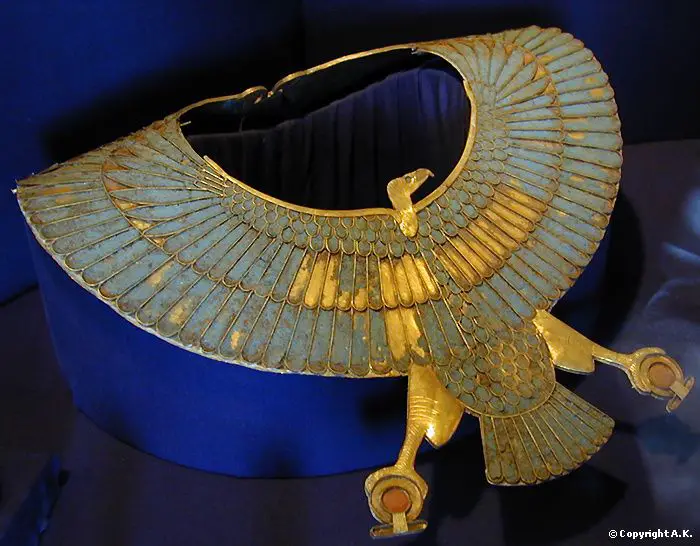
Gold collar from the treasure of the royal tombs Tanis, ca. 1070-712 B.C. – Cairo Museum
In ancient Egypt, women, men and children, from poor families to royalties wore the best colorful jewelry they could afford. The material from which jewelry was made differed according to their wealth and status. Nonetheless,necklaces, bracelets, neck collars, pendants, earrings, armbands, rings and amulets adorned their necks, wrists, ears, fingers and ankles.
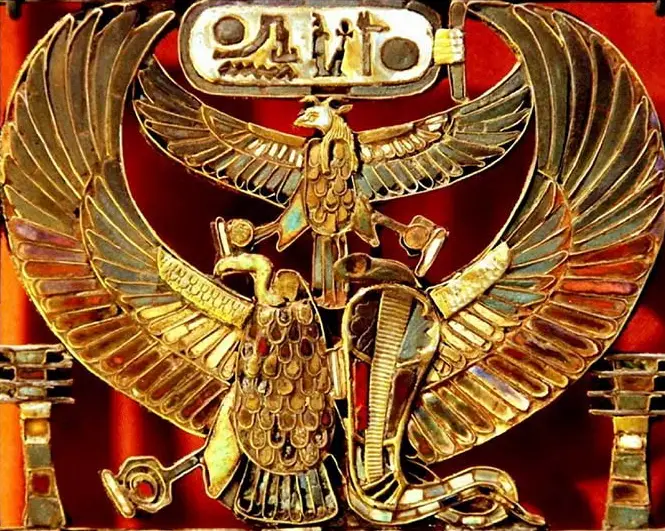
Wealthy Egyptians wore lavish jewelry made of gold, semi-precious stones and colored glass, which was rare when first discovered and very expensive. They loved pieces designed with scrolls, tigers, scarab beetles, winged birds, jackals, antelopes and snakes. The masses wore jewelry made of copper and colored beads, made of painted clay, stones, animal teeth and bones. Silver was a rarity in Egypt, and hardly used.
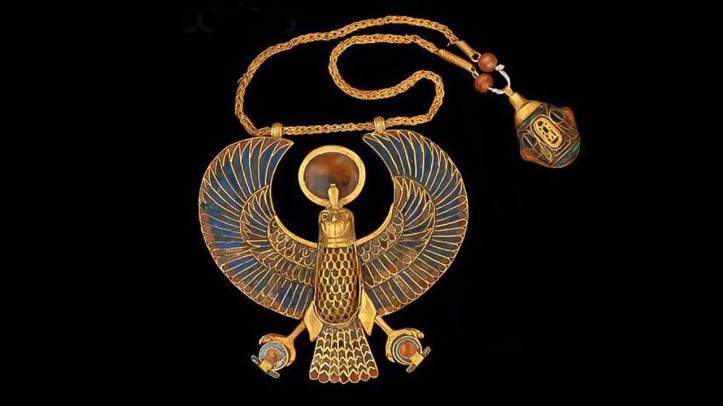
Egyptians wore jewelry not just for adornment, but also because they believed in their magical powers. Jewelry brought them good fortune, protected them from diseases and evil eyes, and warded off malevolent spirits, both during their life and in their afterlife, as they also wore their jewelry after death. Royals and nobles were buried with their jewelry, which allowed archeological excavations to discover these treasures; exhibited in museums in Egypt and around the world.
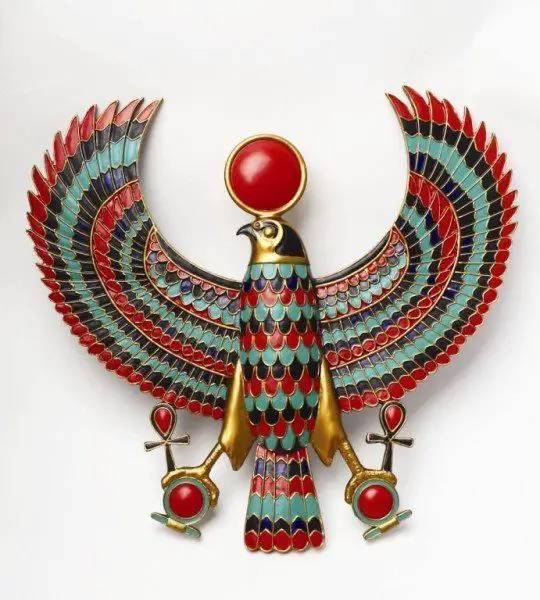

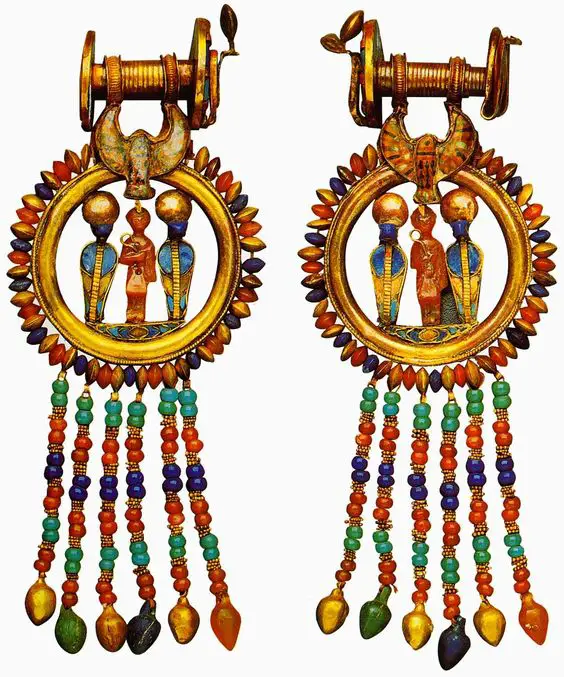


Bracelet with image of Goddess Hathor – Museum of Fine Arts, Boston

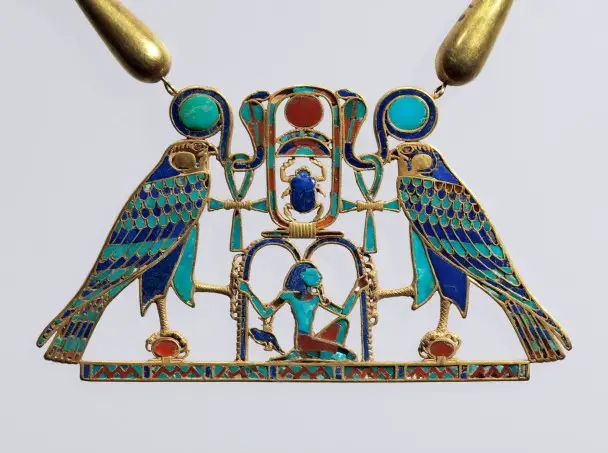
Pectoral and Necklace of Princess Sit-hathor-yunet
